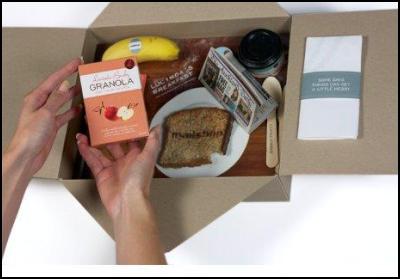Great direct mail design has the ability to capture a recipient’s attention, get them to read and process content, commit to the message, then execute a specific call to action. Although there is no secret formula for direct mail design that will guarantee 100% participation from all recipients, there are best practices marketers should follow to increase brand visibility, response rates, and overall ROI.
First, know the target audience and determine the end goal.
Before starting to develop direct mail copy and design, the following should be clear: What are the characteristics of the target audience and what is important to them? Knowing details about the target audience will help determine the appropriate tone to use for copy, which images should be included, and how to structure ideas in a way the target audience will understand. Also, the more detailed a marketer can be when identifying qualities and characteristics of their audience, the better the opportunity to refine the message for specific segment groups. For example, a real estate agent directing a postcard to potential home buyers can segment that broad group into specific categories – investment purchasers, renters, first-time home buyers, expanding families, etc. Each of these segments would have different motivating factor for purchasing a new home; therefore, the message should speak directly to those issues.
Just as important is clarifying the goal for sending a direct mail piece. What is the intended outcome of the piece? Is the intention of the message to inform, provoke an action, or just to promote awareness of the brand? Whatever it may be, there should only be one main idea represented on each direct mail piece. Marketers may only have but a few seconds of the target audience’s attention; therefore, marketers need to choose one goal and drive that point throughout the direct mail piece.
Make an impact with a strong headline and bold imagery.
Like reading a newspaper, the headline is the first thing people see before deciding to read the entire article or direct mail piece. If the headline is strong and thought provoking, the higher the likelihood that it will capture the attention of the target audience. Effective headlines may include a surprising statistic, an interesting fact, enticing promotional offer, a question or simple statement. Whatever the structure of the headline, it should relate to the rest of the body copy, the intended goal, and to the audience.
Similarly, visual elements have the power to capture the reader’s attention and evoke emotional response. Use bold colors and choose strong images that speak to core motivations that drive readers toward action. These motivations may include social recognition, self acceptance, love and affection, sense of accomplishment, safety and so on. Using visual elements that trigger these needs can grab the readers’ attention and get them to connect to the message on a deeper level.
Be simple, clear and concise with direct mail messages.
Often times, inexperienced marketers make the mistake of using advanced vocabulary and being too ‘wordy’ when trying to get their point across. Simplicity and clarity is critical; every sentence should have a purpose and support the ultimate goal. When reviewing copy, marketers should try to read with the audience’s perspective in mind and ask, “Why should I care? How does this benefit me?” That exercise might help weed out any unnecessary information and keep marketers focused on being direct with their idea.
Additionally, an effective direct mail piece guides recipients’ behavior by providing a clear call-to-action item. Marketers should be blunt and clear in describing what the next step should be for the recipient. Keep the design of the direct mail piece simple and uncluttered, emphasizing call-to-action items and main ideas.
Include a compelling promotional offer to promote responses.
Highlighting compelling and actionable promotional offers on direct mail pieces such as free or discounted trial, free service consultations, access to valuable information and so on, have the ability to capture a readers’ attention and motivate response. Furthermore, consumers are more likely to provide a fair amount of personal information to redeem a coupon or other promotional offer. For marketers, the advantage of using promotional offers with direct mail is the ability to collect consumer data, identify warm leads, and track direct mail success.
Test, test, and test again.
Once a marketer understands the best practices of direct mail design, they have the opportunity to adjust elements and test what works best for their audience. Split the mailing list in half and always test something; one thing at a time (i.e. – headline only, offer only, positioning of images, etc). Be sure to have a strategy in place to measure responses.
Originally posted by Cynthia Fedor on the directmarketingvoice.com


